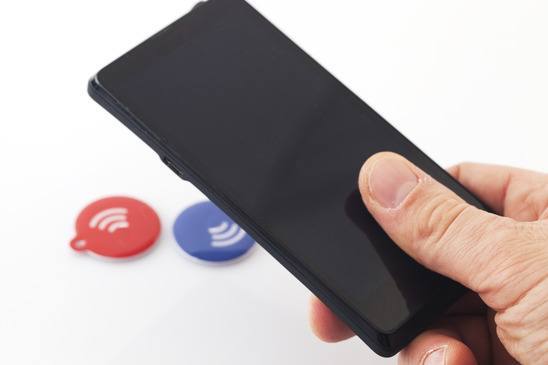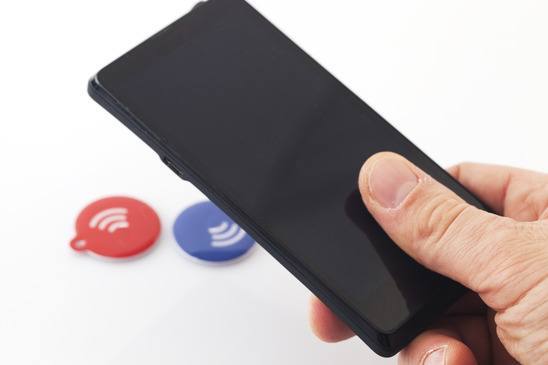
In Proximity Marketing, You Can Use NFC Or Abuse With BLE
February 3, 2014 by guest author, sixteenninewpadmin

Guest Post: Frank Viljoen
Proximity Marketing has received a lot of attention lately – all of it focused on the idea of using technology for the localized distribution of advertising content associated with a particular place.
The key word about this tech is distribution, and the big question to ask is whether that distribution comes in the form of PUSH or PULL.
Anyone recently been to an exhibition, market or similar where you are overwhelmed by exhibitors handing out swathes of brochures, leaflets and samples of their products?
Have you arrived home only to find your entrance hall littered with junk mail, a knock on the door from a salesman offering to switch your broadband or utilities?
Have you opened up your email to find a whole load of spam email offerings?
You’re in a meeting and receive a text message, only to find it’s the latest offering from your local retailer offering you something that is not on the shopping list.
All of the above, in my opinion, fall into the category of marketing related offers being PUSHED towards you. Let’s be honest – most of us don’t like all those offers being pushed on us.
But suddenly, the marketing world is excited about new technology that does just that, albeit in a sexy new way.
The Fuss About BLE
Bluetooth Low Energy is technology that aids in the transmission of or even broadcasts notifications to a recognized device within a specified range, via devices such as Apple’s much talked about iBeacons.
But that’s just more marketing being PUSHED towards consumers. Imagine walking down an aisle of your local supermarket only to be bombarded with offers from all the brands in that aisle. A visit to the local shopping mall or stroll down the High Street could also prove tedious, with offers being pushed from all the local retailers?
Oh, and during this shopping trip, you receive the occasional email notification along with the random text message, all of which will be emitting some form of alert to attract your attention to the handset?
The Better Way With NFC
Near Field Communications (NFC), by comparison, is passive and encourage consumers to tap a tag in a specific location or on a shelf edge, and “pull” information because they actually want it. NFC is less invasive, and does not distract the user from what they are doing.
The key element is a compelling incentive. Because the material is pulled, the advertiser knows for sure that the individual is interested in the product by requesting it.
In a recent press release, a senior analyst spoke of Bluetooth being the magic behind several payment and marketing trials, promising that a mobile wallet, mobile couponing and Location-Based Services will all be possible. The analyst forgot to mention that all of these have been possible via NFC for some time now.
The report went on to state that the crucial functions would vary between payment from mobile to POS terminals, passive transmission of marketing messages and the ability to detect consumers’ location in store?
Again all of these have been available using NFC. There are even suggestions of notifications aimed at people driving past specific locations. Is that not a risk-prone distraction to motorists?
Using Bluetooth in proximity marketing has been around for several years, and has been a resounding failure. Why do marketers think it is going to work this time around?
The Next NFC Is Here
I’m an unabashed NFC junkie, and work with a company that has pushed the boundaries on what’s possible with the technology. Standard static NFC tags are unable to detect what is on the screen at a specific time. The DTAG100 is a custom-designed dynamic NFC tag that can synchronize with the content on the screen – so that what you tap and pull down to a phone is related to the message on the screen, at that moment.
It’s powerful and targeted, but again, it’s not intrusive like BLE. Proximity marketing, if wisely planned and executed, can deliver powerful, innovative and valuable consumer experiences, and at the same time provide a wealth of granular, location-based information to advertisers.
NFC’s adoption rate has varied by countries and regions, but is rolling out across a number of sectors. Here’s a few recent examples of interesting new NFC campaigns:
- Digital Retail Outlets: lnkd.in/dQS3dkG
- Airports : http://lnkd.in/dca5WZF
- Live Music Festivals: http://lnkd.in/bi5M8u8
- Banking: http://lnkd.in/dUxjWrV and Allied Irish Bank
- Leisure: Diageo and Guinness
For a full range of NFC campaigns, take a look at www.nfcworld.com
[infobox bg=”bluelight” color=”black” opacity=”on” subtitle=”Yup. We welcome smart, insightful ideas and opinions from other writers who work in and know this sector. SEO people need not apply. Contact Dave Haynes.”]GUEST POSTS[/infobox]



Leave a comment